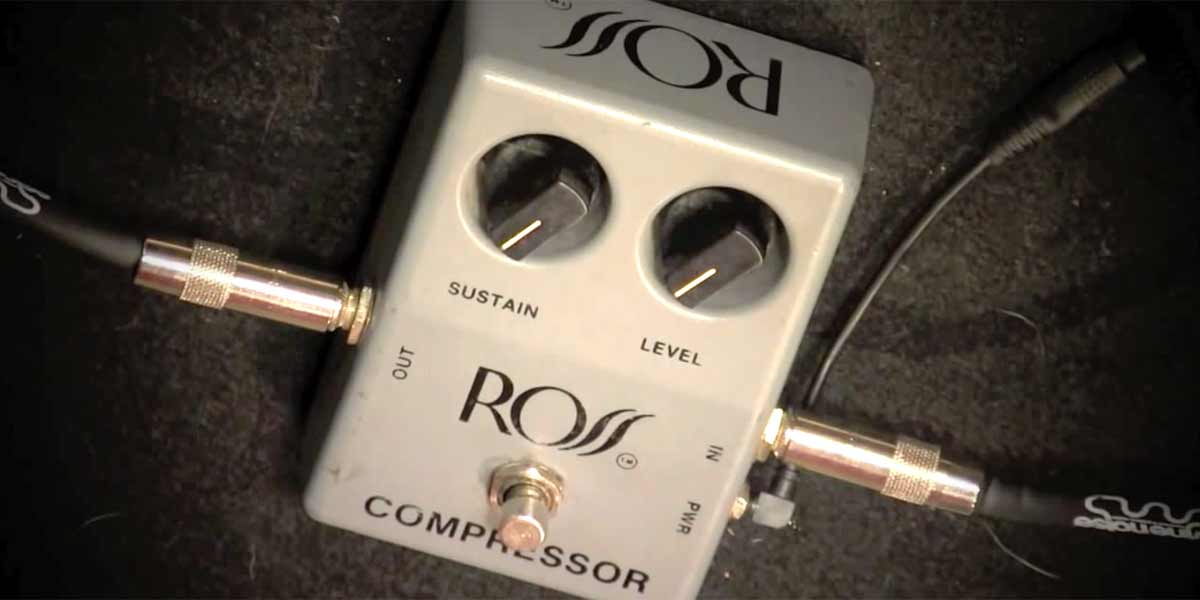
Probably not everyone knows the Ross compressor, but chances are you’ve heard one, or played on a Ross circuit yourself.
Origin of Ross Musical
Bud Ross founded the Kustom Amplification company in 1964 and rented a small grocery store to make amplifiers there. And that was successful, among others Johnny Cash, the Grateful Dead, Creedence Clearwater Revival, Leon Russell and the Jackson Five were avid users of these amps. After Kustom Amplification became one of the most recognized manufacturers of solid-state guitar amps in America, he sold it to Baldwin Pianos in 1972. Shortly after, he launched Ross Musical.
The first Ross effects pedals
After only producing prototypes for a few years, the first real effects pedals appeared on the market around 1974. The first series consisted of a Compressor, Distortion and Phase R1. These pedals were clearly inspired by the MXR pedals that came on the market around the same time.
The Ross Compressor
As was customary at the time, effects pedals had a distinct character and the same can be said of the Ross Compressor. The pedal is based on an MXR Dyna Comp and has modified some parts of this circuit. What remains is a compressor that does what it’s supposed to do with a clear character. The effect is musical, colors your signal and has a clear texture. The Ross is slightly more stable and warmer than the Dynacomp, but most of the features are the same.
The circuit of a Ross compressor: OTA and CA3080 IC
The circuit of the pedal is called an OTA (Operational Transconductance Amplifier). This type of compression is by far the most commonly used in guitar pedals. It does not respond as fast as, for example, a VCA (Voltage Controlled Amplifier) but faster than optical compression. Furthermore, the circuit uses a CA3080 IC. The CA3080 is an amplifier with a pair of differential inputs and a single output, where the output is a current source rather than a voltage source. If you want to know more about exactly how this chip works, check out this datasheet or to the explanation of Don Tillman.
Success came at the end of the 90s
The real success of the Ross Compressor didn’t come until the late 90’s. The band Phish was very popular and people started looking for the old Ross compressors that Trey Anastasio used. But the 30+ year old original Ross Compressors were hard to find and very expensive. Partly because of this, many effect makers decided to use the circuit as the basis for their own compressor.
Only two knobs: sustain and output
The pedal has only two knobs: an output and a sustain button. The output knob sets the volume and the sustain knob sets the threshold when the effect starts working. The further you open this knob, the lower this threshold becomes. The effect also has fixed values for the attack and decay and the amount of compression. The attack is set quite slowly so that the transients of your attack are not affected. The pedal also has a long decay and the degree of compression is considerable.
Modern variants of the Ross compressor
In 2018, Bud Ross’s grandson, together with his childhood friend Ben Brazil, founded the Ross Audibles company and, among other things, the compressor was relaunched. It was sold out in no time and the reissue of the iconic pedal was very successful. In addition to this reissue, many pedal makers have used the Ross circuit as the basis (or inspiration) for their compressor pedals. Often with some adjustments to the circuit and with more control over the parameters of the effect. Perhaps the most famous are the MXR Dynacomp (the original circuit), Wampler Ego, Keeley Compressor Plus, EHX Tone Corset and the Maxon CP9 Pro.
MXR Dyna Comp
MXR Dyna Comp is one of the most popular compressors of all time. Whether you want to tighten up your signal, add rich sustain, or create the percussive and clicky sound heard on numerous hit records, this pedal is straightforward and easy to use. For these reasons, the Dyna Comp Compressor has been the secret weapon on countless pedalboards for years.
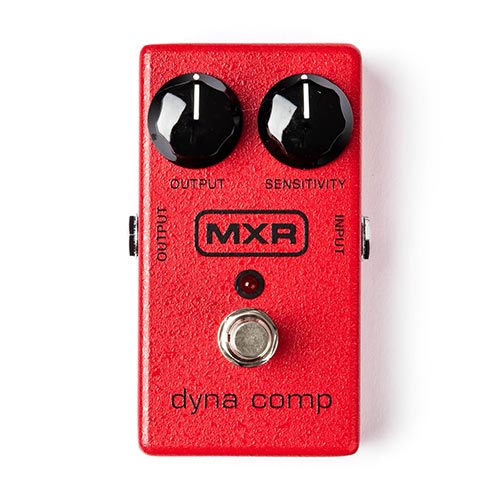
Wampler Ego
Wampler Ego Compressor V2 is widely regarded by some as the industry standard in guitar pedal compression. This pedal brings a new level of of control to what is expected and needed by today’s guitar players.
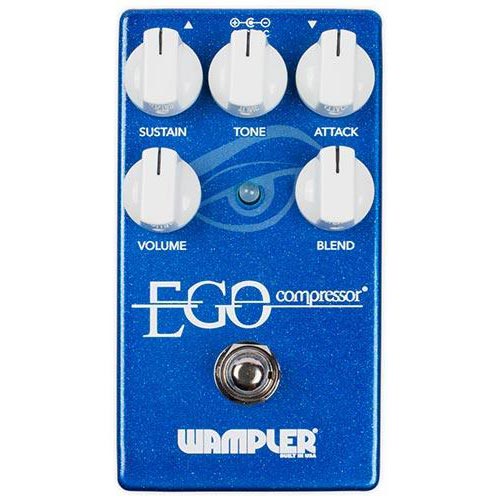
Keeley Compressor +
Keeley Compressor Plus is the most popular boutique compressor in the world. With well over 50,000 compressors built in the Keeley shop we have an expert understanding of compression, limiting, and sustain. Keeley know what it takes to make an instrument sound like it’s been professionally recorded. They know how to make your guitar jump from the mix. They know how to make it fun and easy to play. Keeley Compression is how.
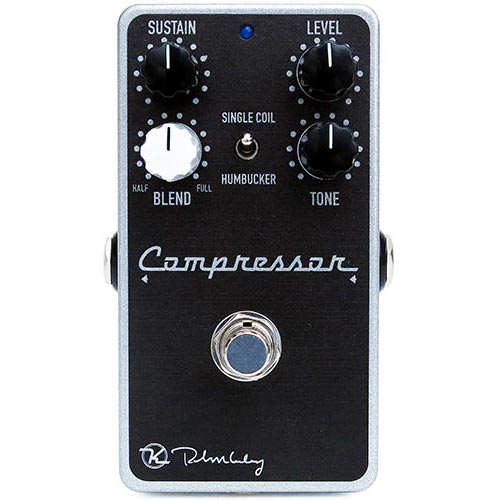
EHX Tone Corset
The Tone Corset is an analog compressor/sustainer that allows for extreme or subtle control of the dynamics of your instrument. There are controls for setting the output volume, sustain/compression, attack, blend amount and pad switch.
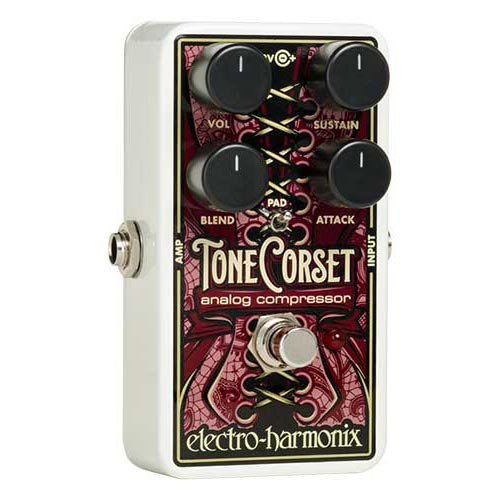
Maxon CP9 Pro+
Maxon CP9 Pro+ is a compressor with tons of squash that does not color your guitar tone or create excessive noise. The circuit provides a very smooth, transparent, almost “glassy” compression with an extremely low noise floor, even at maximum settings. Your guitar sounds like your guitar, only with a smoother, more balanced dynamic response – Notes jump off the fretboard with stunning clarity and limitless yet controlled sustain.

Ross pedals by JHS
Update (31/08/23) JHS recently revived the production of Ross pedals. This has resulted in no less than five new Ross pedals including new versions of the iconic compressor, but also completely new versions that have not been released yet by Ross. The full lineup consists of Ross Phaser, Ross Fuzz, Ross Chorus, Ross Distortion and of course the Ross Compressor. For fans of the brand, here is a short documentary about Ross.
